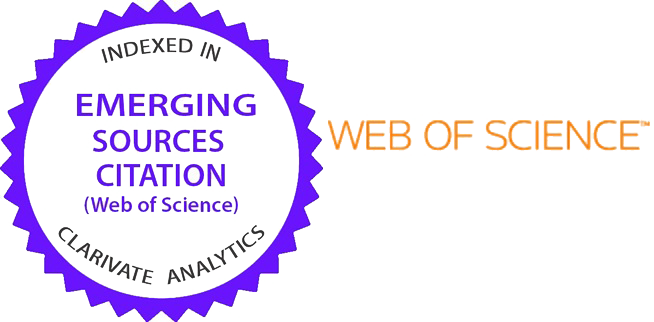Modification of Grey Relational Analysis for Dynamic Criteria Weighting in Decision-Making Systems
DOI:
https://doi.org/10.31436/iiumej.v26i2.3494Keywords:
Comparison, Decision, GRA-C, ModificationAbstract
Grey relational analysis (GRA) is a grey system theory method used to solve multi-criteria decision problems with incomplete or uncertain data. The GRA analyzes the level of closeness or relationship between several alternatives based on a series of criteria. One of the limitations in using the GRA method is the weight of the criteria, which is often fixed or subjective. In many GRA applications, the criterion weights are set based on expert considerations or decision-maker preferences, which can be highly subjective and influenced by individual biases. Grey relational analysis change data driven (GRA-C) method emphasizes the increased effectiveness and flexibility of this method in performance appraisal for multi-criteria decision-making. GRA-C allows for more precise adjustments according to the importance of each criterion, leading to more accurate and relevant evaluation results. By modifying the weights, the GRA-C becomes more flexible and can be adapted to different contexts and specific decision-making needs, so that it can be applied in various industry sectors. These modifications help reduce bias due to improper weight allocation, resulting in more objective performance assessments. The results of the modified GRA-C can provide better insights for decision-makers, supporting a more effective and informed decision-making process. The comparison with the Spearman correlation shows that the GRA-C method has a very strong degree of conformity in producing alternative rankings, with a correlation value 1. This indicates that these methods provide similar results, making them reliable for consistent decision-making.
ABSTRAK: Analisis Perhubungan Kelabu (Grey Relational Analysis, GRA) merupakan satu kaedah dalam teori sistem kelabu yang digunakan untuk menyelesaikan masalah keputusan berbilang kriteria (multi-criteria decision-making) yang melibatkan data tidak lengkap atau tidak pasti. GRA menganalisis tahap keterkaitan atau hubungan antara beberapa alternatif berdasarkan satu siri kriteria. Salah satu kekangan dalam penggunaan kaedah GRA ialah pemberat kriteria yang sering kali bersifat tetap atau subjektif. Dalam banyak aplikasi GRA, pemberat kriteria ditentukan berdasarkan pertimbangan pakar atau keutamaan pembuat keputusan, yang boleh menjadi sangat subjektif dan dipengaruhi oleh bias individu. Kaedah Grey Relational Analysis Change Data Driven (GRA-C) menekankan keberkesanan dan fleksibiliti yang lebih tinggi dalam penilaian prestasi bagi sistem keputusan berbilang kriteria. GRA-C membolehkan pelarasan yang lebih tepat mengikut kepentingan setiap kriteria, yang membawa kepada keputusan penilaian yang lebih tepat dan relevan. Dengan pengubahsuaian pemberat, GRA-C menjadi lebih fleksibel dan boleh disesuaikan dengan pelbagai konteks serta keperluan khusus dalam membuat keputusan, membolehkannya diaplikasikan dalam pelbagai sektor industri. Pengubahsuaian ini membantu mengurangkan bias akibat pengagihan pemberat yang tidak sesuai, sekali gus menghasilkan penilaian prestasi yang lebih objektif. Hasil daripada GRA-C yang telah diubah suai dapat memberikan pandangan yang lebih baik kepada pembuat keputusan, seterusnya menyokong proses membuat keputusan yang lebih berkesan dan berasaskan maklumat. Perbandingan dengan korelasi Spearman menunjukkan bahawa kaedah GRA-C mempunyai tahap kesesuaian yang sangat tinggi dalam menghasilkan kedudukan alternatif, dengan nilai korelasi sebanyak 1. Ini menunjukkan bahawa kaedah-kaedah tersebut memberikan hasil yang serupa dan boleh dipercayai untuk proses membuat keputusan yang konsisten.
Downloads
Metrics
References
N. Xiaoyan, W. Ying, W. Zhenduo, and S. Zhiguo, “Link-16 anti-jamming performance evaluation based on grey relational analysis and cloud model,” J. Syst. Eng. Electron., pp. 1–11, 2024, doi: 10.23919/JSEE.2023.000120.
K. Mausam, A. Pare, S. K. Ghosh, and A. K. Tiwari, “Thermal performance analysis of hybrid-nanofluid based flat plate collector using Grey relational analysis (GRA): An approach for sustainable energy harvesting,” Therm. Sci. Eng. Prog., vol. 37, p. 101609, 2023.
T. Škrinjari?, “Dynamic portfolio optimization based on grey relational analysis approach,” Expert Syst. Appl., vol. 147, p. 113207, 2020.
M. Gerus-Go?ciewska and D. Go?ciewski, “Grey relational analysis (gra) as an effective method of research into social preferences in urban space planning,” Land, vol. 11, no. 1, p. 102, 2022.
S. Chatterjee and S. Chakraborty, “Optimization of friction stir welding processes using multi-attributive border approximation area comparison (MABAC) method in neutrosophic fuzzy environment,” Int. J. Interact. Des. Manuf., vol. 17, no. 4, pp. 1979–1994, Aug. 2023, doi: 10.1007/s12008-023-01308-6.
B. S. Nithyananda, G. V Naveen Prakash, N. Ankegowda, K. B. Vinay, and A. Anand, “Optimization of Performance and Emission Responses of Common Rail Direct Injection Engine by Taguchi-Grey Relational Analysis Technique,” in RAiSE-2023, Jan. 2024, vol. 59, no. 1, p. 140. doi: 10.3390/engproc2023059140.
X. Wang et al., “Integration of the grey relational analysis with machine learning for sucrose anaerobic hydrogen production prediction,” Int. J. Hydrogen Energy, vol. 68, pp. 388–397, 2024.
M. O. Esangbedo, J. Xue, S. Bai, and C. O. Esangbedo, “Relaxed Rank Order Centroid Weighting MCDM Method With Improved Grey Relational Analysis for Subcontractor Selection: Photothermal Power Station Construction,” IEEE Trans. Eng. Manag., 2022, doi: 10.1109/TEM.2022.3204629.
K.-H. Chang, “Integrating Subjective–Objective Weights Consideration and a Combined Compromise Solution Method for Handling Supplier Selection Issues,” Systems, vol. 11, no. 2, p. 74, 2023.
A. Le Gouais et al., “Understanding how to create healthier places: A qualitative study exploring the complex system of urban development decision-making,” Health Place, vol. 81, p. 103023, May 2023, doi: 10.1016/j.healthplace.2023.103023.
H. Sulistiani, Setiawansyah, P. Palupiningsih, F. Hamidy, P. L. Sari, and Y. Khairunnisa, “Employee Performance Evaluation Using Multi-Attribute Utility Theory (MAUT) with PIPRECIA-S Weighting: A Case Study in Education Institution,” in 2023 International Conference on Informatics, Multimedia, Cyber and Informations System (ICIMCIS), 2023, pp. 369–373. doi: 10.1109/ICIMCIS60089.2023.10349017.
H. Sulistiani, S. Setiawansyah, A. F. O. Pasaribu, P. Palupiningsih, K. Anwar, and V. H. Saputra, “New TOPSIS: Modification of the TOPSIS Method for Objective Determination of Weighting,” Int. J. Intell. Eng. Syst., vol. 17, no. 5, pp. 991–1003, Oct. 2024, doi: 10.22266/ijies2024.1031.74.
S. Dhruva, R. Krishankumar, E. K. Zavadskas, K. S. Ravichandran, and A. H. Gandomi, “Selection of Suitable Cloud Vendors for Health Centre: A Personalized Decision Framework with Fermatean Fuzzy Set, LOPCOW, and CoCoSo,” Informatica, vol. 35, no. 1, pp. 65–98, Nov. 2024, doi: 10.15388/23-INFOR537.
Setiawansyah, A. A. Aldino, P. Palupiningsih, G. F. Laxmi, E. D. Mega, and I. Septiana, “Determining Best Graduates Using TOPSIS with Surrogate Weighting Procedures Approach,” in 2023 International Conference on Networking, Electrical Engineering, Computer Science, and Technology (IConNECT), 2023, pp. 60–64. doi: 10.1109/IConNECT56593.2023.10327119.
J. Wi?ckowski, B. Kizielewicz, B. Paradowski, A. Shekhovtsov, and W. Sa?abun, “Application of Multi-Criteria Decision Analysis to Identify Global and Local Importance Weights of Decision Criteria,” Int. J. Inf. Technol. Decis. Mak., vol. 22, no. 06, pp. 1867–1892, Nov. 2023, doi: 10.1142/S0219622022500948.
M. Deveci, D. Pamucar, I. Gokasar, M. Köppen, B. B. Gupta, and T. Daim, “Evaluation of Metaverse traffic safety implementations using fuzzy Einstein based logarithmic methodology of additive weights and TOPSIS method,” Technol. Forecast. Soc. Change, vol. 194, p. 122681, Sep. 2023, doi: 10.1016/j.techfore.2023.122681.
R. Andika, “Kombinasi Grey Relational Analysis (GRA) dan ROC Dalam Penentuan Promosi Jabatan Supervisor,” Chain J. Comput. Technol. Comput. Eng. Informatics, vol. 2, no. 1, pp. 37–44, 2024, doi: 10.58602/chain.v2i1.94.
S. Gao et al., “Optimization of Laser Cladding Parameters for High-Entropy Alloy-Reinforced 316L Stainless-Steel via Grey Relational Analysis,” Coatings, vol. 14, no. 9, p. 1103, Sep. 2024, doi: 10.3390/coatings14091103.
H. Lu, Y. Zhao, X. Zhou, and Z. Wei, “Selection of Agricultural Machinery Based on Improved CRITIC-Entropy Weight and GRA-TOPSIS Method,” Processes, vol. 10, no. 2, p. 266, Jan. 2022, doi: 10.3390/pr10020266.
M. W. Arshad, S. Setiawansyah, and S. Sintaro, “Comparative Analysis of the Combination of MOORA and GRA with PIPRECIA Weighting in the Selection of Warehouse Heads,” BEES Bull. Electr. Electron. Eng., vol. 4, no. 3, pp. 112–122, Mar. 2024, doi: 10.47065/bees.v4i3.4922.
N. Moldybayeva et al., “Decision Matrix in an Autonomous Power System for Agro-Industrial Complexes with Renewable Energy Sources,” Energies, vol. 17, no. 17, p. 4357, Aug. 2024, doi: 10.3390/en17174357.
M. Bayda?, M. Y?lmaz, Ž. Jovi?, Ž. Stevi?, S. E. G. Özuyar, and A. Özçil, “A comprehensive MCDM assessment for economic data: success analysis of maximum normalization, CODAS, and fuzzy approaches,” Financ. Innov., vol. 10, no. 1, p. 105, Mar. 2024, doi: 10.1186/s40854-023-00588-x.
I. Z. Mukhametzyanov, “Elimination of the Domains’ Displacement of the Normalized Values in MCDM Tasks: The IZ-Method,” Int. J. Inf. Technol. Decis. Mak., vol. 23, no. 01, pp. 289–326, Jan. 2024, doi: 10.1142/S0219622023500037.
A. Puška, A. Štili?, D. Pamu?ar, D. Božani?, and M. Nedeljkovi?, “Introducing a Novel multi-criteria Ranking of Alternatives with Weights of Criterion (RAWEC) model,” MethodsX, vol. 12, p. 102628, Jun. 2024, doi: 10.1016/j.mex.2024.102628.
H. U. Khan et al., “Multi-criteria decision-making methods for the evaluation of the social internet of things for the potential of defining human behaviors,” Comput. Human Behav., vol. 157, p. 108230, Aug. 2024, doi: 10.1016/j.chb.2024.108230.
I. Naz et al., “Integrated Geospatial and Geostatistical Multi-Criteria Evaluation of Urban Groundwater Quality Using Water Quality Indices,” Water, vol. 16, no. 17, p. 2549, Sep. 2024, doi: 10.3390/w16172549.
H. Aljaghoub et al., “Comparative analysis of various oxygen production techniques using multi-criteria decision-making methods,” Int. J. Thermofluids, vol. 17, p. 100261, Feb. 2023, doi: 10.1016/j.ijft.2022.100261.
Markovi?, Staji?, Stevi?, Mitrovi?, Novarli?, and Radoji?i?, “A Novel Integrated Subjective-Objective MCDM Model for Alternative Ranking in Order to Achieve Business Excellence and Sustainability,” Symmetry (Basel)., vol. 12, no. 1, p. 164, Jan. 2020, doi: 10.3390/sym12010164.
J. Wei, C. Huang, S. Li, J. Liu, L. Huang, and Y. Liang, “Stress Analysis and Gray Relation Optimization of QFP Solder Joints Under Torsional and Bending Loading,” in 2024 25th International Conference on Electronic Packaging Technology (ICEPT), Aug. 2024, pp. 1–6. doi: 10.1109/ICEPT63120.2024.10668549.
Downloads
Published
How to Cite
Issue
Section
License
Copyright (c) 2025 IIUM Press

This work is licensed under a Creative Commons Attribution-NonCommercial 4.0 International License.






















